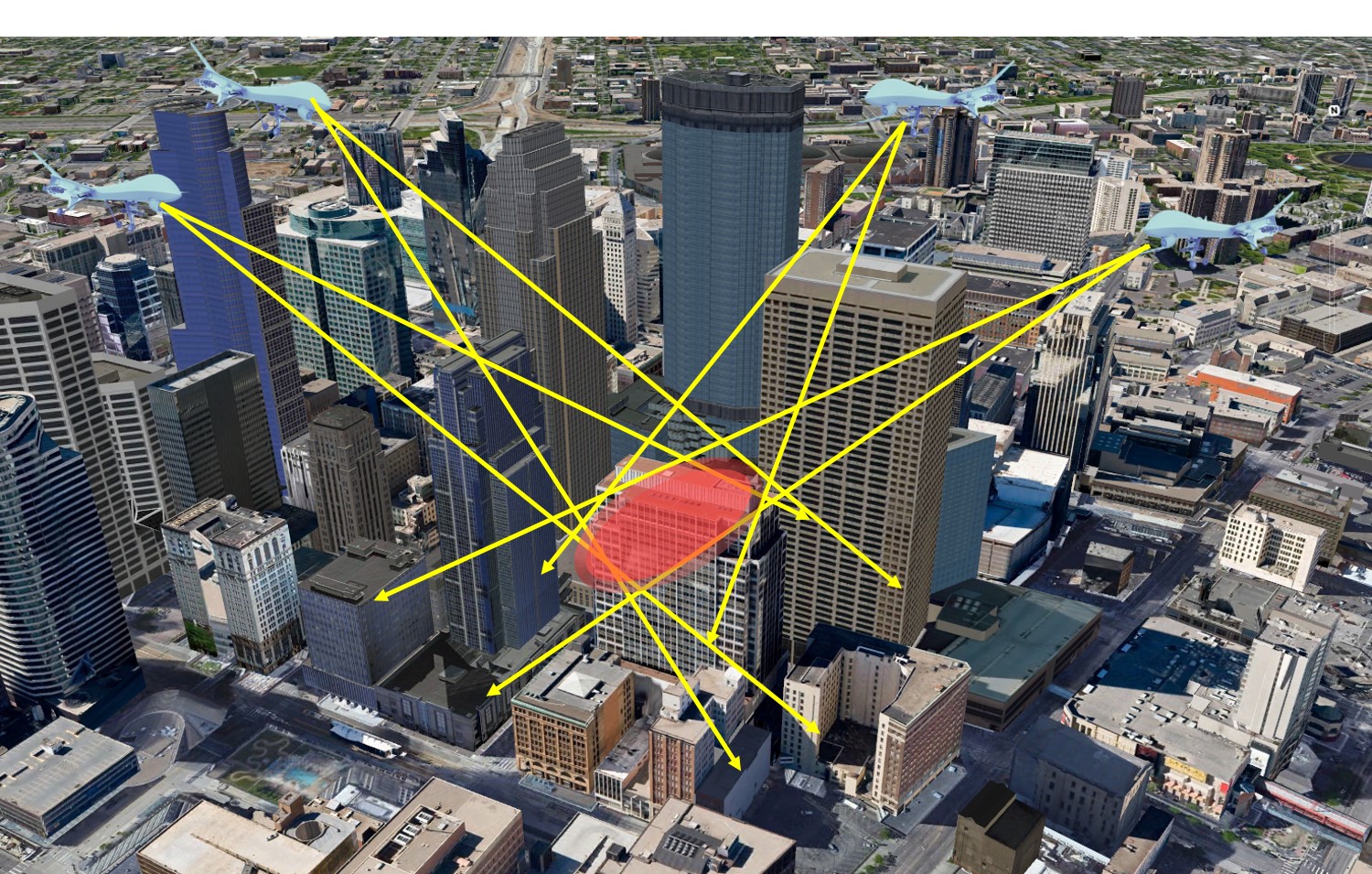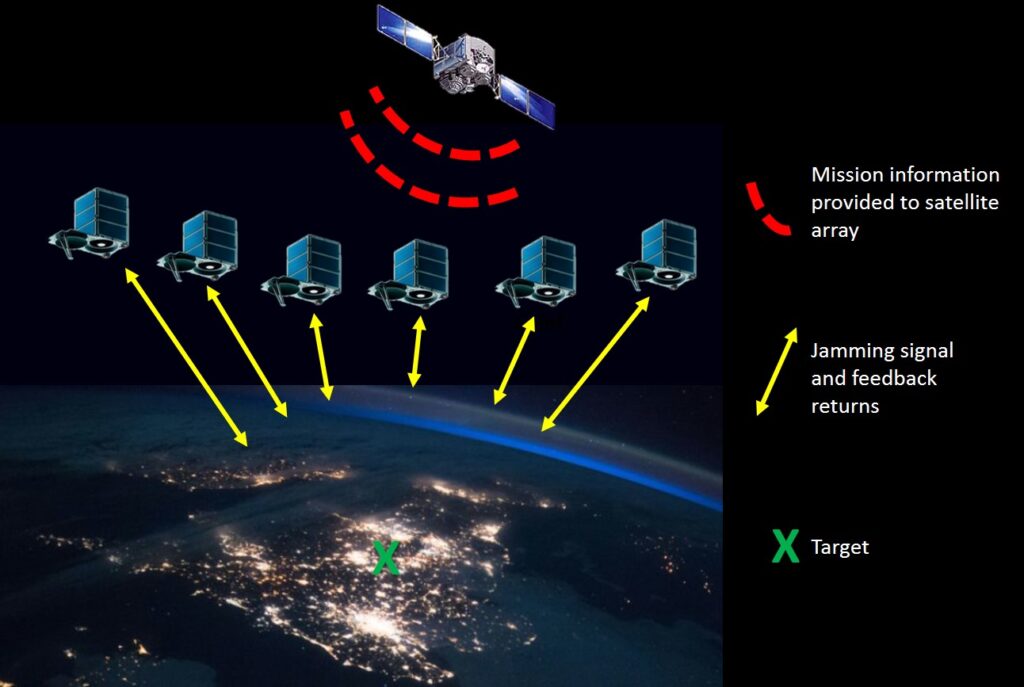Moving Platform
An ad hoc array of drones or satellites for tactical superiority
A widely-spaced, dynamically variable geometry, ad-hoc coherent transmit array offers the potential for realizing novel tactical and strategic mission objectives that are not otherwise available today.
DESCRIPTION
While moving platforms are the most challenging application for our proven arraying technology, the theory, physics and simulations support this platform.
The strategic benefits are broad and tactically significant. EW mission such as cyber warfare and jamming can potentially be conducted from an array of satellites or drones.


A coherent transmit array can be made with antennas mounted to small satellites or drones. Although the platforms are moving relative to one another, the signal from each of them arrives at the target of interest in-phase at precisely the same time.
This has uses for missions where lack of attribution is desired since the power is distributed among the sensors. It also is applicable to missions where additional units need to be added ad hoc as others degrade (batteries die) or are removed by hostile forces.
In 2010 we demonstrated a method to array fixed stable antennas, connected with fiber and wires. This method was continuously and autonomously self-calibrating, running for six months without the need to periodically point off for recalibration, (the primary downside of competing methods).
In 2015 we found a way to remove the fiber and wires between the antennas so that the nodes could be independent. However, the antennas still remained static during operation. Soon after that we devised a method that enabled the antennas to move relative to one another while still remaining coherent. This method used our closed-loop independent node arraying technology along with internode command and control algorithms.
This internode control scheme requires that maintenance data be shared including, node relative position and attitude reporting and precise time synchronization distributed throughout the array (rate and phase).
Our closed-loop independent node arraying method includes all the benefits of the coherent transmit arraying technology such as: N2 EIRP increase (where N is the number of sensors), built-in redundancy, low power per element, dynamic re-configurability, and graceful degradation in the event of an element failure or scheduled maintenance.
INNOVATIONS
- Concentrated RF energy to a target from an array of widely-spaced, relatively moving, antennas
- Unknown phase variation continually and autonomously corrected using our closed-loop arraying technology
EXAMPLE

As an example, an array of satellites in LEO can be used to jam a ground target. This notional scenario consists of six satellite platforms with onboard sensors capable of both transmit and receive, a feedback means such as a ground target reflection or cooperative ground transceiver which returns some of the transmitted signal to the transmitting array controller and an onboard controller which utilizes the weights derived from the feedback target. In this example the mission information (e.g. target characteristics, schedule) can be provided by a COMSAT to each node (depicted as a GEOSAT).
A closed loop algorithm called weighted perturbation is run at the controller for each of the six nodes enabling the independent nodes to automatically synchronize with each other. Additional nodes can join the array, if more power is desired. When using target reflections for feedback instead of a cooperating transceiver, the two-way range losses make it necessary to have substantial gain and power on each platform. Because of this, for some missions, UAVs may provide better performance since range loss is much less.
BENEFITS
- Mitigation of threats from anti-radiation weapons since the phase center of the array does not correspond to a physical platform.
- Reduced risk of attribution, since phase center (if it exists) is not at a physical platform
- Greatly enhanced data link performance. Array EIRP increases as the square of the number of elements
- Lowered LPI/LPD; the more nodes, the less power is needed from each
- In a jamming mission, the array can provide much greater EIRP than any one platform while avoiding targeting
- Enables high precision source AOA of targets from the receive array due to the diameter of the array (can’t be realized with a single platform)
